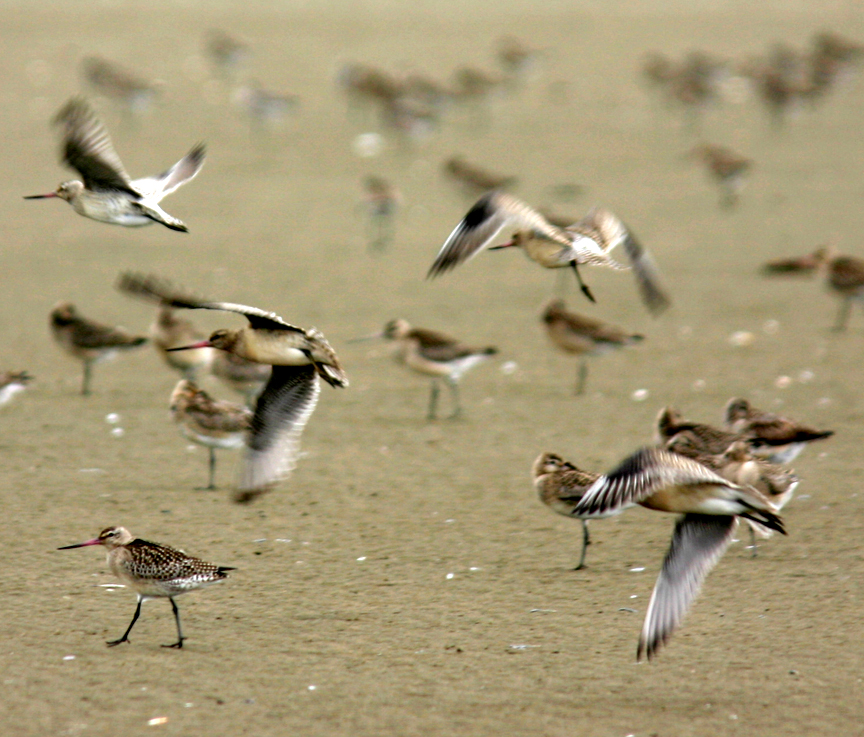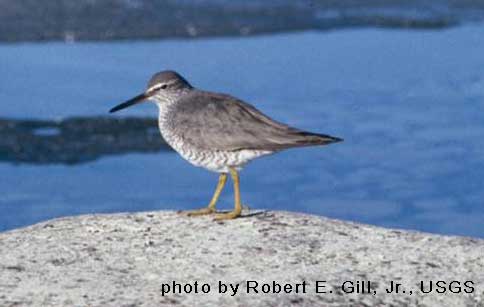- Home
- About S&T
- Taxa/Organisms
- Ecosystems
- Issues
- Methods & Tools
- Reports & Publications
- Location
- Search
2008 | Publisher: USGS | Science Center: Fort Collins Science Center (FORT, Ft. Collins) | Format: URL
www.fort.usgs.gov — With the exception of Aspen, coniferous species dominate the forests of the Rocky Mountains (Populus tremuloides Michx.; Peet, 2000). The establishment of new aspen stands in the central Rocky Mountains generally follows major disturbances, particularly forest fires, with new stems sprouting from surviving root systems and with rare establishment More...

2008 | Publisher: USGS | Science Center: Fort Collins Science Center (FORT, Ft. Collins) | Format: URL
www.fort.usgs.gov — Irreplaceable resources such as water, timber, biodiversity and recreational opportunities are all being affected by the earth's global changing climate. Ecological disturbances - wildfire, insect outbreaks, and the spread of invasive species - are also accelerating and changing the earth's ecosystems. US Geological Survey (USGS) and US Fish and More...

2007 | Publisher: Other (Ecological Society of America) | Format: .PDF
www.nrmsc.usgs.gov — Every winter, government agencies feed ;6000 metric tons (63 106 kg) of hay to elk in the southern Greater Yellowstone Ecosystem (GYE) to limit transmission of Brucella abortus, the causative agent of brucellosis, from elk to cattle. Supplemental feeding, however, is likely to increase the transmission of brucellosis in elk, and may be affected by More...

Publisher: USGS | Science Center: Alaska Science Center (ASC, Anchorage) | Format: URL
alaska.usgs.gov — This web resource provides information concerning the on-going Research at the USGS Alaska Science Center on birds and avian influenza (bird flu). The site links to quick facts, on-going research, workshop results, monitoring and surveillance, guidelines on how to safeguard against avian influenza, publications and reports, migratory bird More...

Publisher: USGS | Science Center: Northern Rocky Mountain Science Center (NRMSC, Bozeman) | Format: URL
nrmsc.usgs.gov — Northern Rocky Mountain Science Center has been monitoring, conducting research, and modeling ecosystem responses to climatic variability since 1991, first at Glacier National Park but eventually throughout the western U.S. in collaboration with other scientists. Coordination with scientists around the world have led to mountain research networks More...

Publisher: Academic Institution (Academic Institution(University of Washington-Seattle Campus)) | Format: .PDF
www.cfr.washington.edu — The Western Mountain Initiative is a team of USGS and USDA Forest Service scientists working together to better understand and predict the responses of Western mountain ecosystems to climatic variability and change, emphasizing sensitivities, thresholds, resistance, and resilience. The objective of the Western Mountain Initiative (WMI) is to More...

Publisher: USGS | Science Center: Fort Collins Science Center (FORT, Ft. Collins) | Format: URL
www.fort.usgs.gov — Mountain ecosystems within US national parks and other protected areas provide valuable goods and services such as clean water, biodiversity conservation, and recreational opportunities, but their potential responses to expected climatic changes are inadequately understood. The Western Mountain Initiative (WMI) is a collaboration of scientists More...

Publisher: NBII | Format: URL
www.nbii.gov — Natural resource managers face complex decisions that require a clear understanding of the status of wildlife populations and their habitats. Monitoring is key to making effective management decisions and evaluating the outcomes of those decisions. The goal of NRMP is to improve the accessibility of monitoring efforts to resource managers to aid More...

Publisher: USGS | Science Center: Fort Collins Science Center (FORT, Ft. Collins) | Format: URL
www.fort.usgs.gov — Natural Resource Monitoring Partnership (NRMP) is a collaborative effort by the natural resource management community to improve monitoring efforts in order to support effective evaluation and decision-making by sharing information on monitoring projects and protocols. The Natural Resource Monitoring Partnership was built for easy access to More...

Publisher: USGS | Science Center: Northern Rocky Mountain Science Center (NRMSC, Bozeman) | Format: URL
www.nrmsc.usgs.gov — An overview of the population status and trend monitoring efforts for grizzly bears in the Greater Yellowstone Ecosystem during the 2002 field season. Contains statement of problem, objectives, methodology, communication plan, and highlights and key findings.

Publisher: USGS | Format: URL
3dparks.wr.usgs.gov — This web resource is a collection of anaglyphic images (3D) of the Powell Survey of Colorado River Canyon Country. All images on this website are derived from photography that Major John Wesley Powell commissioned to document his Second Expedition (1871-1872) and later expeditions on the Colorado Plateau. This website contains a collection of 3D More...

Publisher: USGS | Science Center: Alaska Science Center (ASC, Anchorage) | Format: URL
alaska.usgs.gov — Mountains are the single dominant physiographic feature throughout most of Alaska. Indeed, mountains are such a defining feature of arctic Alaska and Beringia that they account for over 20 percent of the land area in the entire Holarctic (excluding the Greenland ice sheet). Not surprisingly, the avifauna of the region has been strongly More...
